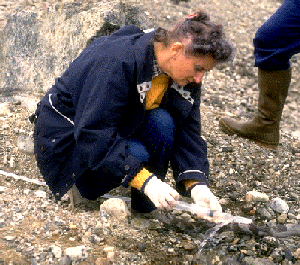Ground Water
Rationale
The composition of ground water reflects the influence parameters
such as bedrock, Quaternary deposit and soil composition, ground
water flow paths and velocity, etc. have upon the water that infiltrates
the ground. Ground water in much of the temperate and cool areas
of northern Europe is a significant component of stream water,
and, as such, can help interpret the surface water data.
Advantages
Allows the geogenic contribution to solutes in a catchment (weathering)
to be constrained.
Drawbacks
Expensive and complicated medium to sample and analyse (except
at springs) (Figs. 1-2).
Seasonal variations require monitoring.
Common very low concentration levels impose non-contaminating
equipment and procedures, as well as extremely low detection limits
on analytical instruments (or pre-concentration methods).
BORING A GROUND WATER WELL
![[Kola logo]](/Kola/gwborin_.gif)
(Photo: Ø. Jæger)
Fig. 1: Boring a new ground water well.
|
PUMPING GROUND WATER FOR SAMPLING

(Photo: C. Reimann)
Fig. 2: Pumping water out of a ground water well, using a small submersible
pump lowered down in the well shaft below the ground water table. To
minimise contamination, a volume of water much greater than that present
in the well must be pumped out and disposed of, before the samples for
analysis can be collected.
|



![[Kola logo]](/Kola/gwborin_.gif)



